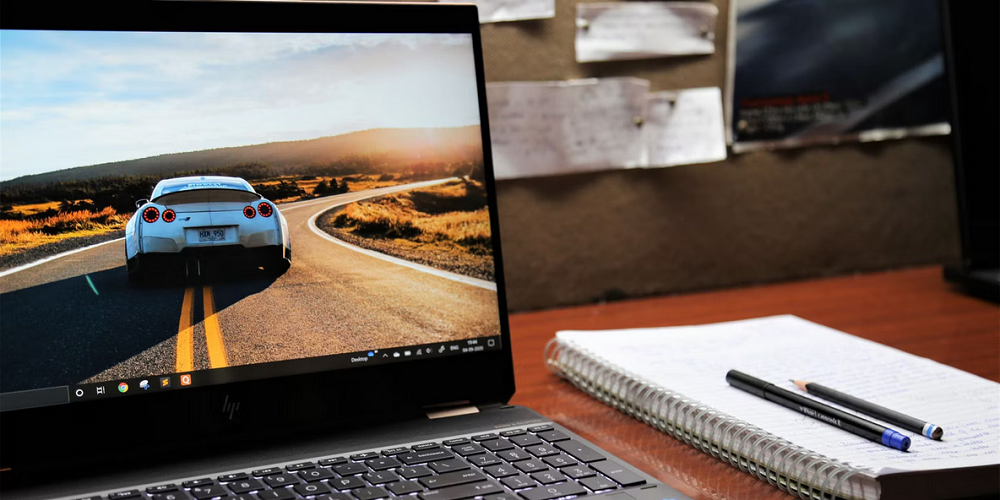
When running apps in fullscreen mode, Windows should immediately hide the taskbar. Well, it is a major distraction if the taskbar shows while running a game, browsing the browser, or watching a movie in fullscreen mode. The taskbar is vital for navigating Windows, but it may often get in the way. There may come a time when the taskbar shows in fullscreen when you do not want it to. If this occurs, you will want to remove it from the way. This post will demonstrate many solutions for showing the Windows taskbar in fullscreen mode.
How To Easily Restart Windows Explorer?
If you are experiencing problems with the taskbar, you may often reset the taskbar’s settings to fix the issue. This involves restarting Windows Explorer from the Task Manager. To restart Explorer, perform these steps:
1 – To launch Task Manager, press Ctrl + Shift + Esc on the keyboard.
2 – Under the Processes tab, locate and select Windows Explorer, then click the Restart button.
The screen will darken momentarily as File Explorer restarts, and the taskbar should now function properly.
Turn Off Taskbar Lock
Locking all taskbars stops them from moving on the display. However, if you open an app in fullscreen mode, the taskbar may also become fullscreen. To turn the taskbar lock in Windows 10, right-click an empty taskbar space. Then, make that the menu option Lock all taskbars is not selected.
How To Easily Set Taskbar To Automatically Hide?
Well, to fix the Windows taskbar showing in fullscreen mode, you may also make the taskbar automatically hide. To hide the taskbar automatically, do the following:
1 – Launch Start > Settings and select Personalization > Taskbar from the Personalization menu.
2 – Check the Automatically hidden taskbar option inside the Taskbar behaviors section.
3 – On Windows 10, navigate to Start > Settings > Personalization > Taskbar and enable the option Automatically hide the taskbar in desktop mode.
How To Easily Repair Apps on Windows 11?
If you observe the taskbar showing in fullscreen mode when executing a specific app, this might be the reason for the issue. The app repair function will search for missing or corrupted files and replace them. To repair an app on Windows 11, follow these steps:
1 – Navigate to Start > Settings > Apps > Apps & features.
2 – Locate the problematic app, click the three-dot button next to it and select Advanced options.
3 – In the Reset section, click the Repair button.
If the problem persists, try the Reset option located right below Repair. Note that during a Reset, the app’s data will be removed. Unfortunately, not all apps feature a reset or repair option. Therefore, you may need to remove and reinstall the problematic app.
Disable Visual Effects
Windows 11 features a redesigned user interface with several animations and other visual effects, which may drive the taskbar to show in fullscreen. Follow these steps to disable animation and transparency effects:
1 – Click Start and navigate to Settings, and/or use the keyboard shortcut Windows key + I.
2 – When the Settings menu is shown, scroll to Accessibility > Visual effects.
3 – Turn off Transparency and Animation effects inside the Visual effects area.
4 – Using Performance Options, you may also alter visual effects in Windows 10 and 11. To launch the Run dialogue, press the Windows key + R, type sysdm.cpl, and then click OK.
5 – Once the System Properties box has opened, click the Advanced tab and Settings button in the Performance section.
6 – When the Performance Options box opens, select the Visual Effects tab and deselect the visual effects you do not want.
7 – Select the Adjust for optimal performance option to disable everything and test the functionality of the taskbar. If so, return and examine each visual impact individually.
In addition to helping fix the taskbar, removing visual effects improves the performance of Windows 11 on older systems.
Check Windows Update
Windows should be kept as current as possible for security, features, and reliability reasons. Updates also offer bug fixes for problems with the taskbar.
1 – To upgrade Windows 11 manually, navigate to Start > Settings > Windows Update and click the Check for updates option. Then, download any available system updates. Your computer may restart during the updating process.
2 – On Windows 10, navigate to Start > Settings > Update & Security > Check for updates.
3 – When you return from the upgrade, sign in and ensure that the taskbar is working back.
Conclusion:
If you’re showing problems with the taskbar, one of the options listed above should help you fix the fullscreen Windows taskbar. Eliminating the taskbar in fullscreen mode makes gaming and media consumption more pleasurable.


















